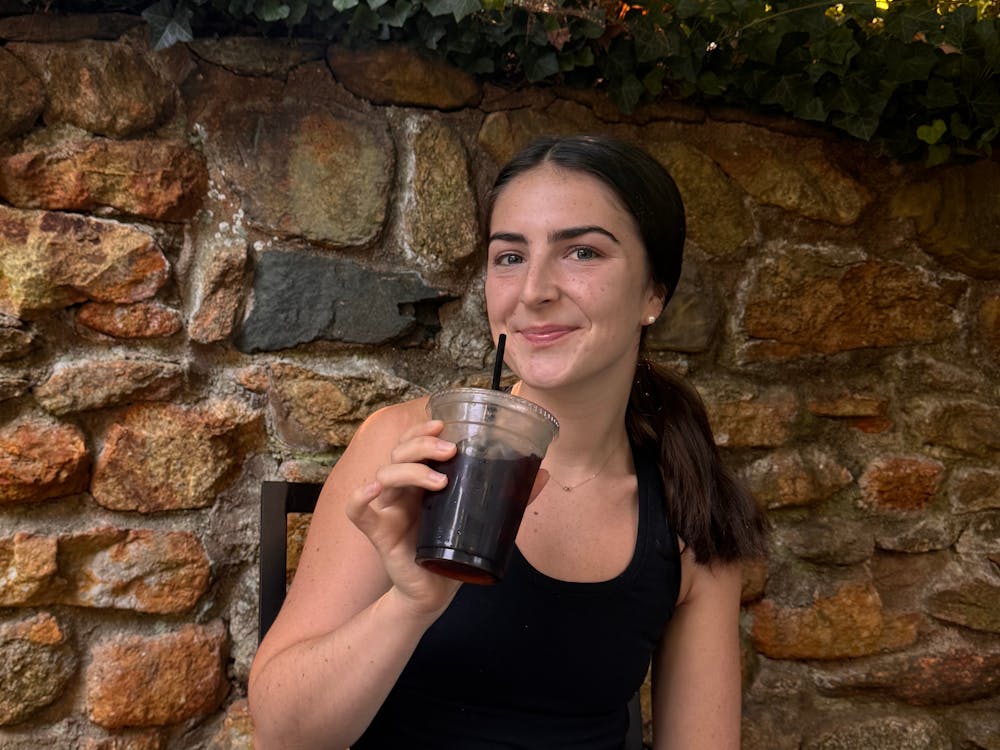While Memorial Gym is home to pick-up basketball games, weight training and tennis gear rentals today, the Gym once was a cultural center for the University. Memorial Gym officials want to remind students of its history this week with their 75th anniversary plans.
Opened in 1924, Memorial Gym housed the physical education program as well as the varsity basketball, varsity boxing and indoor track teams, according to Mark Fletcher, Director of Intramurals since 1985.
Because the Gym was a center for collegiate sports in the 1950s but also included such events as musical concerts and speeches, former Dean of Students Robert T. Canevari said "it was a very important building for the University at this time.
"That's where it all happened, and it was within walking distance," Canevari said.
Memorial Gym served many purposes until the Physical Education administration moved to University Hall when it opened in 1965.
Memorial Gym's celebration of its first full 75 years, which began Sunday during regular hours and will end at about midnight Saturday night, features a special daily attraction or activity. For example, Thursday's events include the "Iron Man" contest, modeled like a triathlon. The event includes shooting underhanded free throws and running a four-yard dash.
Each day of the celebration, the Gym asks a "daily question." A name is drawn randomly from the list of participants who answered the question correctly, and the winner receives a t-shirt. To wrap up the week, Saturday at 7:30 p.m. the Jimmy Dorsey orchestra will play big band ballroom and swing dance-styled music of the 1920s.
The week is focused on remembering the history of the Gym, which is why much of the music and other festivities are centered around "old school" events.
Memorial Gym facility manager Sarah Benbow said the Gym boasts the nation's oldest indoor track. The Gym also has boxing and free-weight equipment. Although there are 1,000 to 2,000 visitors to the Gym every day, Benbow anticipates more people for the celebration.
"It would just be great if everyone could stop by and check out what's going on and get a good look at history," Benbow said.
Fletcher agreed.
"It really does have an interesting history," he said.
He added that the Gym used to be the social center of Charlottesville in the days before the city constructed similar multiple-use buildings and came to rely less on the University to provide such needs.
Fletcher said Memorial Gym "serviced the University so well for many years."
According to Fletcher, Memorial Gymnasium was built as a memorial to students and alumni who died in World War I. The $300,000 funding required for the project originated from student fees. At the time of its construction, the Gym was one of the biggest in the East.
The Gym has ties to the famous as well. After World War II, Louis Armstrong, Glenn Miller and Tommy Dorsey were among those who played there, Fletcher said.
The trend for hosting celebrities has continued through the years. Raymond Bice, former University historian and psychology professor for over 50 years, said President Franklin D. Roosevelt delivered his "Stab in the Back" speech, which denounced Italy's declaration of war on France, at the Gym in 1940.
According to Canevari, then-Sen. John F. Kennedy spoke at the 1958 Law Day Dinner in the Gym and was accompanied by his brothers, Robert and Ted.
At the time, Ted Kennedy was a Law School student and president of Student Legal Form, an organization begun a few years prior by Robert Kennedy, a Law School graduate.
During the Bush administration, Memorial Gym was used as the center of the Media for Education Summit, which was attended by all of Bush's Cabinet members and each state's governor, Fletcher said.
Both Canevari and University swimming Coach Mark Bernardino share a common history involving the Gym. When they attended the University, both lived in the dormitories of the gymnasium, which were rent-free and located at the southwest area of the complex. Visiting athletic teams also found themselves staying under the roof of Memorial Gymnasium.
Canevari, who lived in the Gym's dormitories for a year and a half, said he often heard the sounds of the settling building and even woke in the middle of the night to find a mouse on his chest.
In short, living there was "an adventure," Canevari said.
Bernardino, who lived in the Gym from 1971 to 1973, said there were "all kinds of athletes," and living in the Gym was the equivalent of an athletic scholarship. Athletes received free accommodations, but they were responsible for nightly lock-up and the cleaning of the premises.
Because Memorial Gym was the Athletic Department's headquarters and the site of P.E. classes and registration, crowding became a problem, according to Frank Finger, former University wrestling coach for 20 years.
As each athletic season passed, the next athletic team would come in and use the lockers and space that the previous team had used, Finger said.
Until it was drained in 1952, an unmistakable feature of Memorial Gym was the large two-foot deep reflecting pool.
As Memorial Gym celebrates its 75th year serving the University community, it is an opportunity for students to continue to validate Fletcher's claim that "every student at U.Va. since 1924 has been in Memorial Gymnasium"






